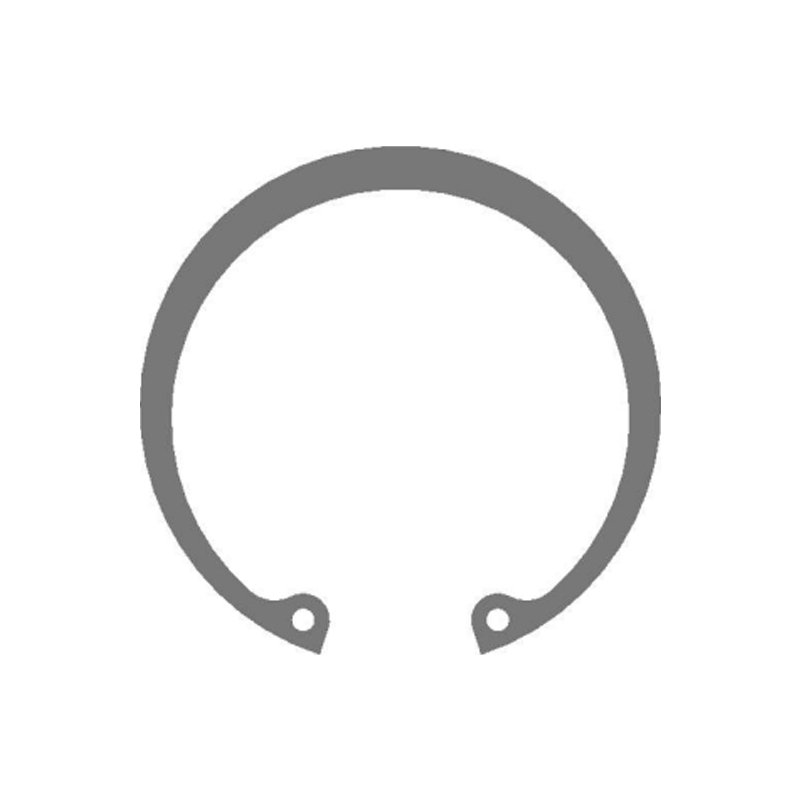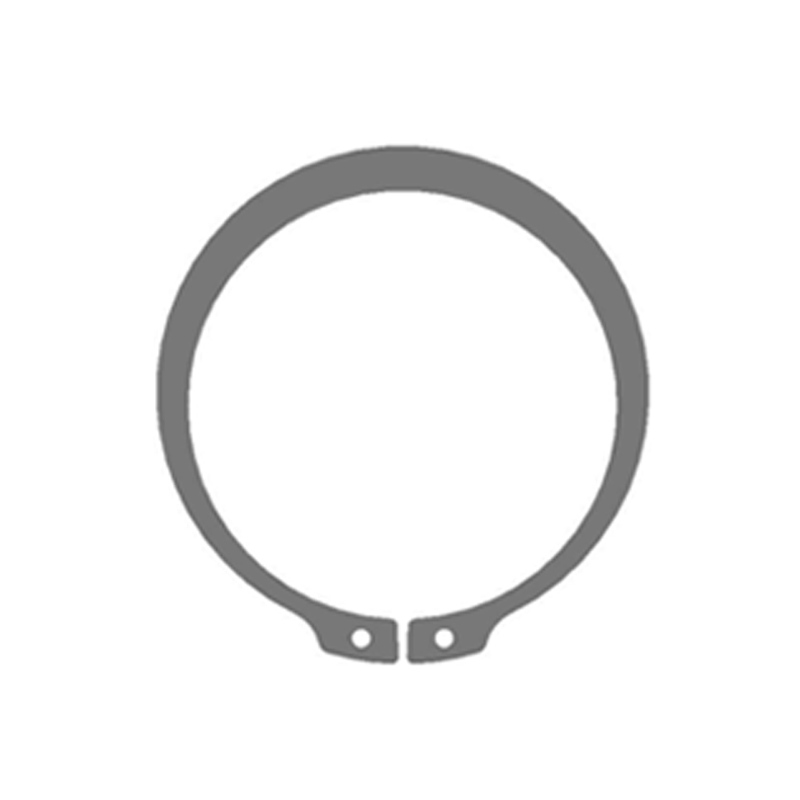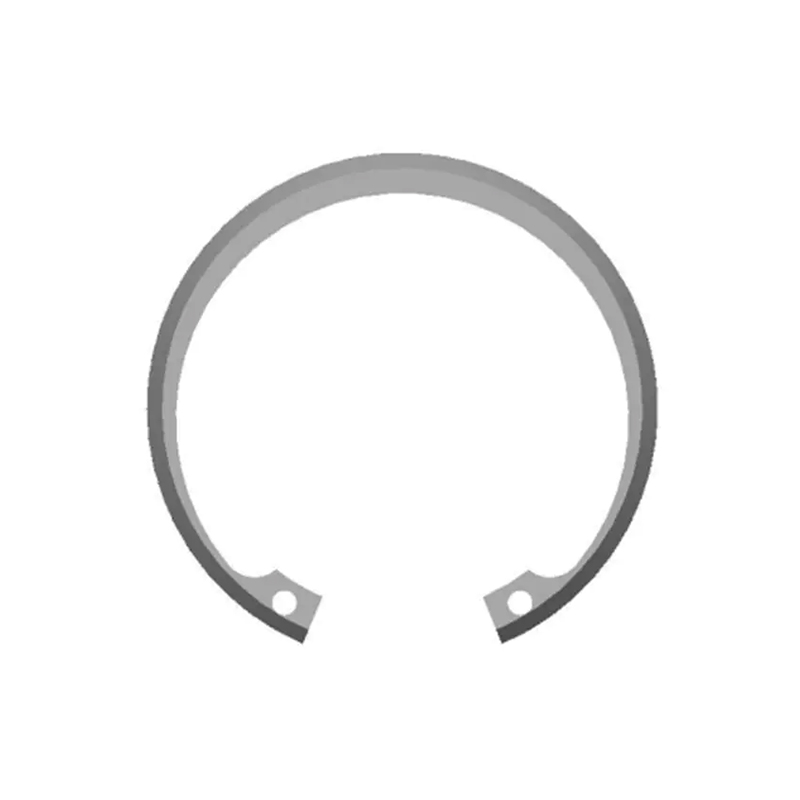Beveled retaining rings have a distinct geometry that changes how they interact with grooves, shafts, and housings. When you pick the right ring type, you reduce assembly time, improve load handling, and extend service life. This article focuses on practical applications where beveled retaining rings outperform flat-profile snap rings and spiral rings, and gives guidance on selection, groove design, and installation.
Core mechanical advantages of beveled retaining rings
Beveled retaining rings have an angled face at the mating surface. That bevel alters contact mechanics: the load path shifts from a narrow contact line to a controlled wedge action that raises axial capacity and reduces localized stress. In many real-world assemblies this difference translates to higher functional reliability compared with standard C-type snap rings or spiral rings.
Axial load distribution
The bevel spreads axial forces across a small radial band instead of a sharp edge. If your assembly confronts sustained axial loads or shock loads, beveled rings resist groove deformation and ring migration more effectively than flat snap rings.
Radial retention and radial clearance
Because the bevel converts some axial force into a wedging action, the ring maintains radial seating with less radial interference. That behavior is useful when radial clearance is tight and you need consistent retention without large shaft/housing interference fits.
Applications that favor beveled retaining rings
Below are specific application types and why beveled rings perform better than snap or spiral rings in those contexts.
High axial-load shafts and actuators
Use beveled rings where shafts or pistons carry axial forces from gear mesh, thrust bearings, or linear actuators. The bevel reduces groove face bearing stress and lowers risk of ring climb or groove deformation under repeated thrust cycles.
Compact assemblies with confined radial space
When radial envelope is limited, spiral rings sometimes help because of low radial height, but beveled rings can match radial clearance while providing stronger axial lock. Choose beveled rings when you need a balance of compactness and higher axial capacity.
Rotating parts subject to vibration and reversing loads
Vibration and load reversal promote ring fatigue and migration. The wedge action of beveled rings resists micro-motion at the groove face, improving retention life in transmissions, gearboxes, and rotating couplings.
Precision assemblies and tight axial positioning
In precision sensors, encoder shafts, and finely tuned mechanisms, small axial drift can degrade function. Beveled rings provide a stable axial datum with less seating variation than thin snap rings or spiral rings that can compress or creep.
Applications with localized groove wear concerns
When groove face wear is likely (frequent disassembly or abrasive environments), the broader bearing stress distribution of beveled rings reduces the rate of groove deformation and the need for frequent maintenance.
Quick performance comparison
| Performance Criteria | Beveled Retaining Ring | Flat Snap Ring | Spiral Ring |
| Axial load capacity | High | Medium | Low–Medium |
| Radial profile (space) | Moderate | Low | Very Low |
| Ease of installation | Requires pliers/fixture | Easy with circlip pliers | Moderate, special tools |
| Best where vibration present | Yes | Sometimes | No |
Design and selection guidance
Follow these practical rules when using beveled retaining rings in your designs.
- Groove face angle: match bevel angle to the ring specification to create full contact; mismatched angles concentrate stress.
- Groove width and depth: design per manufacturer tolerances; too shallow a groove reduces axial capacity, too deep allows play.
- Material selection: choose hardened alloy steels or corrosion-resistant grades when loads or environment demand higher strength or protection.
- Surface finish: deburr grooves and rings to prevent stress risers that accelerate fatigue.
- Installation tools: use appropriate retaining ring pliers or fixtures to seat the ring without over-stressing the ends.
Testing, validation, and standards
Validate designs with axial push-out tests, cyclic load tests, and vibration endurance tests that reflect field conditions. Reference dimensional and material standards from ISO, DIN, or ANSI where applicable, and follow vendor data for groove geometry and heat treatment.
Selection checklist for engineers and buyers
- Define peak axial and cyclic loads for the ring.
- Confirm radial envelope available.
- Identify environmental factors: corrosion, temperature, abrasion.
- Request manufacturer groove recommendations and proof-load data.
- Plan assembly fixtures or pliers for reliable seating and removal.
Conclusion: choose by function, not habit
When the assembly demands higher axial retention, resistance to vibration, stable axial positioning, or reduced groove wear, beveled retaining rings often outperform flat snap rings and spiral rings. Use the design tips and checklist above to match ring geometry, groove details, and material to the operating conditions. Where axial capacity or long-term stability matters, prioritize beveled ring designs and validate with targeted testing.

















